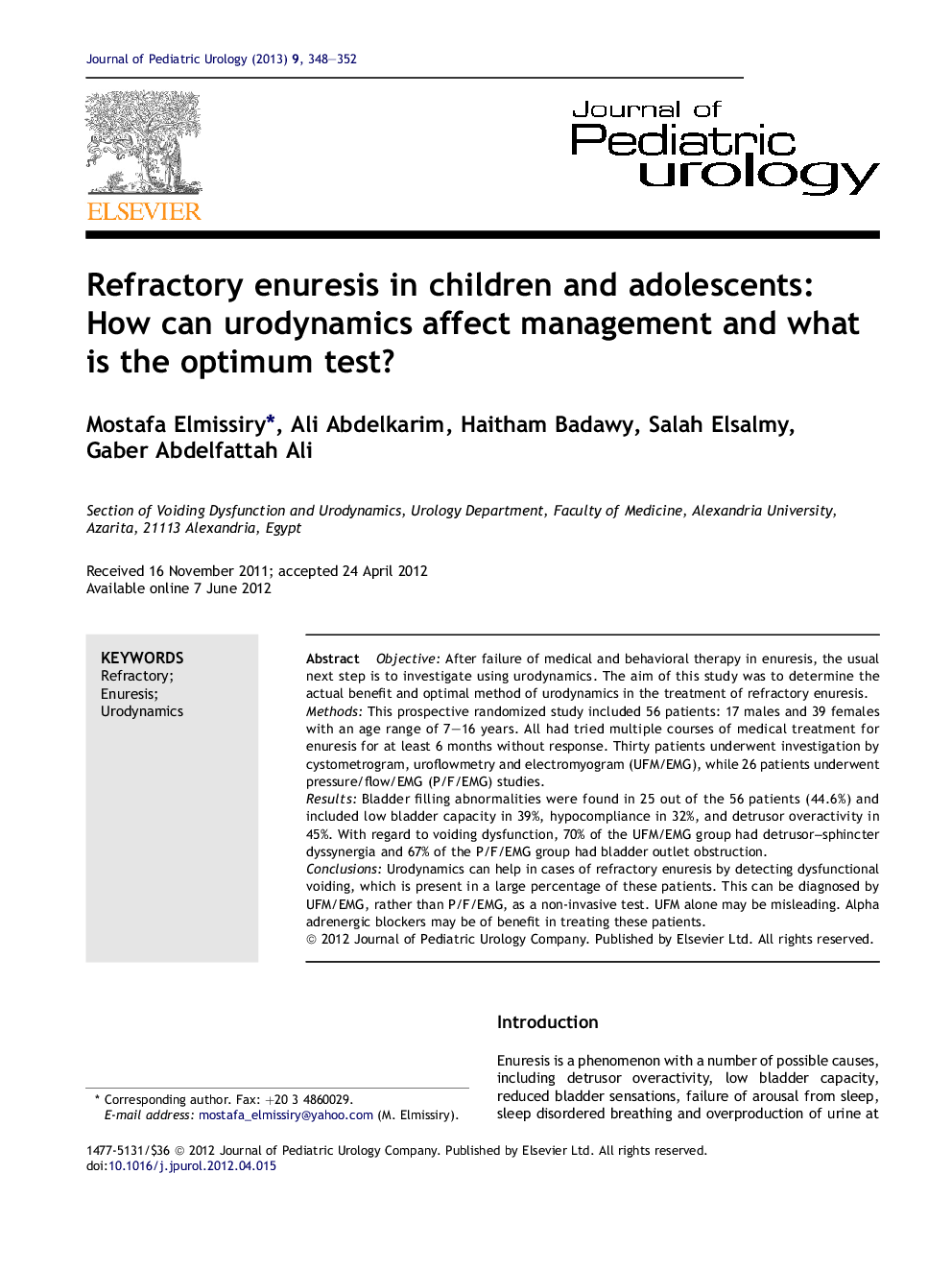| Article ID | Journal | Published Year | Pages | File Type |
|---|---|---|---|---|
| 4162693 | Journal of Pediatric Urology | 2013 | 5 Pages |
ObjectiveAfter failure of medical and behavioral therapy in enuresis, the usual next step is to investigate using urodynamics. The aim of this study was to determine the actual benefit and optimal method of urodynamics in the treatment of refractory enuresis.MethodsThis prospective randomized study included 56 patients: 17 males and 39 females with an age range of 7–16 years. All had tried multiple courses of medical treatment for enuresis for at least 6 months without response. Thirty patients underwent investigation by cystometrogram, uroflowmetry and electromyogram (UFM/EMG), while 26 patients underwent pressure/flow/EMG (P/F/EMG) studies.ResultsBladder filling abnormalities were found in 25 out of the 56 patients (44.6%) and included low bladder capacity in 39%, hypocompliance in 32%, and detrusor overactivity in 45%. With regard to voiding dysfunction, 70% of the UFM/EMG group had detrusor‒sphincter dyssynergia and 67% of the P/F/EMG group had bladder outlet obstruction.ConclusionsUrodynamics can help in cases of refractory enuresis by detecting dysfunctional voiding, which is present in a large percentage of these patients. This can be diagnosed by UFM/EMG, rather than P/F/EMG, as a non-invasive test. UFM alone may be misleading. Alpha adrenergic blockers may be of benefit in treating these patients.
